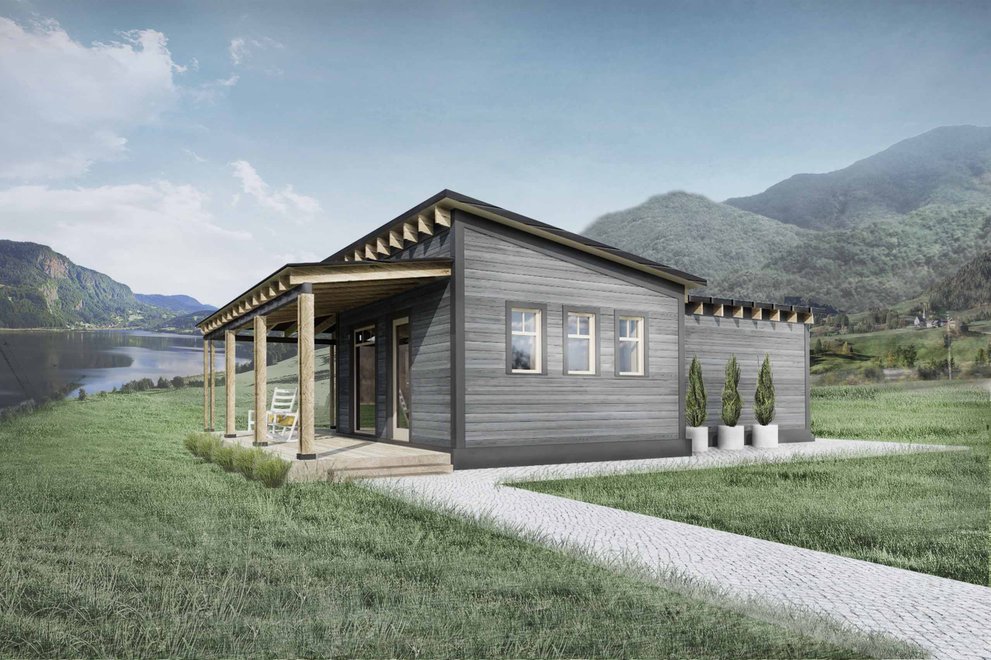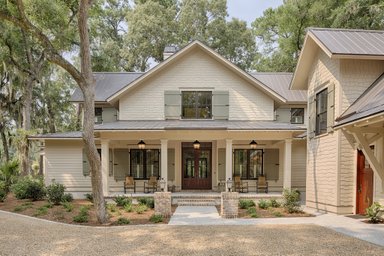At first, building a new energy-efficient home is all about imagining the best of what’s possible—the hottest design, the latest green technology, and the coolest energy-efficient products. Then, reality bumps into your dreams. Maybe it’s your budget or even the limitations of your building site. To help take the bumps out of the building process, we asked five architects and designers who specialize in sustainable development and green design to share their experience on what you need to know before breaking ground.
Click here to explore our collection of energy-efficient house plans.
Know your budget
According to Ben Uyeda, designer, co-founder of ZeroEnergy Design, FreeGreen, and director of HomeMade Modern, the biggest mistake people make is that they design their house twice. “First, they get it costed out with what they want; then, they get it redesigned with what they can afford,” he says. The key is to coordinate the most cost-optimal approach to reducing your home’s footprint while adding environmental benefits.
Look at the whole picture
Use a holistic approach in your design process, says Jennifer R Young, AIA, LEED AP BD+C at the firm of Lake Flato Architects in San Antonio, Texas. Consider overall comfort, connection to the outdoors, sustainable material sourcing, healthy products and the highest indoor air quality.
Review project goals
To Nancy Malone, AIA, LEED Fellow, and a principal Siegel & Strain Architects in Emeryville, California, it’s critical to set key project goals, at the beginning of the process, and revisit them frequently. “Review your goals at key milestones, and use them to make design decisions, especially value-engineering decisions,” Malone says.
Understand your climate
Perform a climate analysis early in the design process to help understand the particular weather patterns and sun angles of your site, Young advises. “The more you understand about your site, the more passive strategies you can employ, which gives you a head start on creating a comfortable, energy efficient home,” she explains.
Orient and Insulate
The tried and true methods for building an energy-efficient home are still the best, says Paul Warner, licensed architect, general contractor, and principal of San Francisco-based Sagemodern Inc. These include orienting your house and placing windows to maximize solar gain when you want it and minimize it when you don’t, designing the correct overhangs and other window shading, using the right amount of insulation, and air sealing. Young adds, “If possible, orient your home on an east-west axis, which allows you to minimize the amount of lower/harder-to-shade sun from the east and west, to maximize southern exposure in your heating season (if you have one), and to gain the soft northern light year round."
There is no green bullet
There is no one-size-fits-all solution to energy efficiency. For example, while the idea that you get more value for every dollar spent on insulation is generally true, it depends on the difference between the temperature inside and outside of your home, Uyeda says. What has a huge impact in Austin, Texas, may not work as well in Santa Barbara, California.
Size matters
Smaller houses are inherently more resource efficient than larger ones, Warner says. As Jonathan Feldman, AIA, principal of San Francisco-based Feldman Architecture, points out, larger homes not only consume much more energy, but they require more materials to build, which also have large amounts of embodied energy. Young agrees. “It’s always tempting to want more space,” she says. “But, think about what you need day to day, and allow one space to have multiple programs.” Warner sums it up: “A compact floor plan with good orientation and good insulation not only saves energy in the long run, but it should allow you to install smaller mechanical equipment.”
Make sure your mechanical contractor properly sizes your HVAC system so that it runs at peak efficiency, and you’re not paying for excess capacity.
Don’t believe the hype
You don’t have to buy into a lot of complicated systems or fancy gadgets to achieve energy efficiency. “Keep things simple, and purchase systems and appliances that make your life simpler and are easy to program without costly maintenance,” Young says. Malone agrees. “Our culture has solved many of our design challenges with technological solutions,” she says. “Although many of these solutions offer benefits, we can design energy efficient homes with a set of fairly low-tech engineering principles.”
Ask how they know
Ask your design team what stands behind their recommendations. Uyeda suggests asking if they use modeling software and cost-benefit analyses to determine what’s right for your home. Malone agrees. Energy models can analyze predicted energy performance in a given design, and also model variations such as different wall assemblies, windows and mechanical systems, to identify which elements will be the most—or least—worth investing in.
Know your priorities
Understanding what green means to you, and communicating with your design team is crucial. “If you are looking for a return on your investment, then you should aim to balance your electric load and onsite energy generation (solar, wind, geothermal, fuel cell) with a goal of supplying at least enough energy so that you don’t exceed your utility company’s lowest tier pricing structure,” Feldman explains. “If you want to be net-zero, then that leads to different design strategies.”
Pay attention to your lifestyle
Be honest about your energy usage and habits. If you forget to turn off the lights, a lighting control system, occupancy sensors, or an app on your phone that can turn off your lights can help save energy. Or if you have other specific needs, like cooling a large wine collection or running electronic sound and video equipment, tell your design team.
Solar Strategies
If you’re considering adding expensive features like a solar system to your home, one way to save money is to package the cost with your mortgage. Uyeda put solar panels on the roof of his house, uses them to charge his electric car among other things, and financed the cost in his mortgage. The bottom line: Understand your priorities and lifestyle, know that there’s no one-size-fits-all way to achieve energy efficiency, and be prepared to communicate your priorities to your design/build team are keys to help you make your dreams of a new green home become a reality.
Explore more energy-efficient house plans here.






